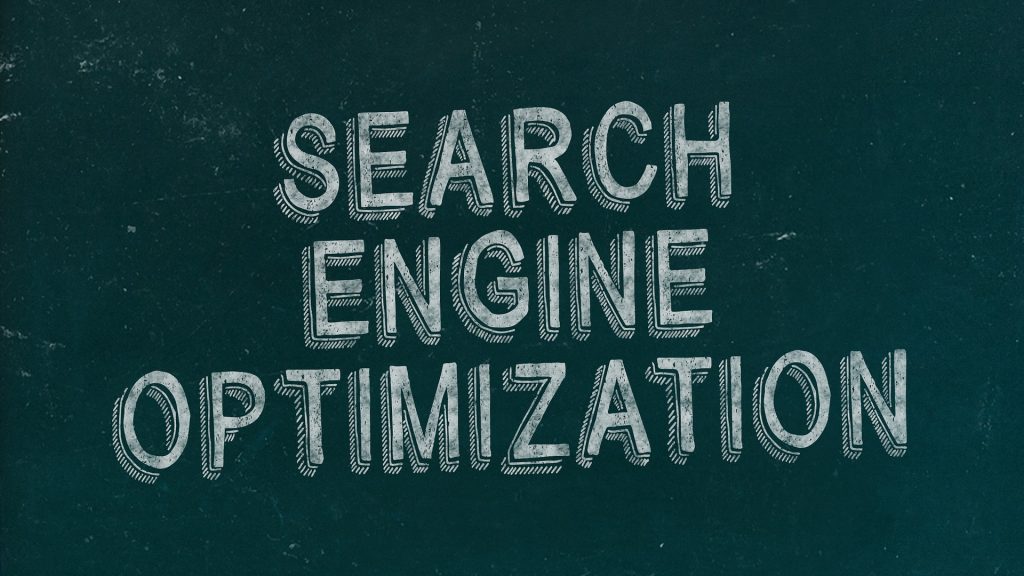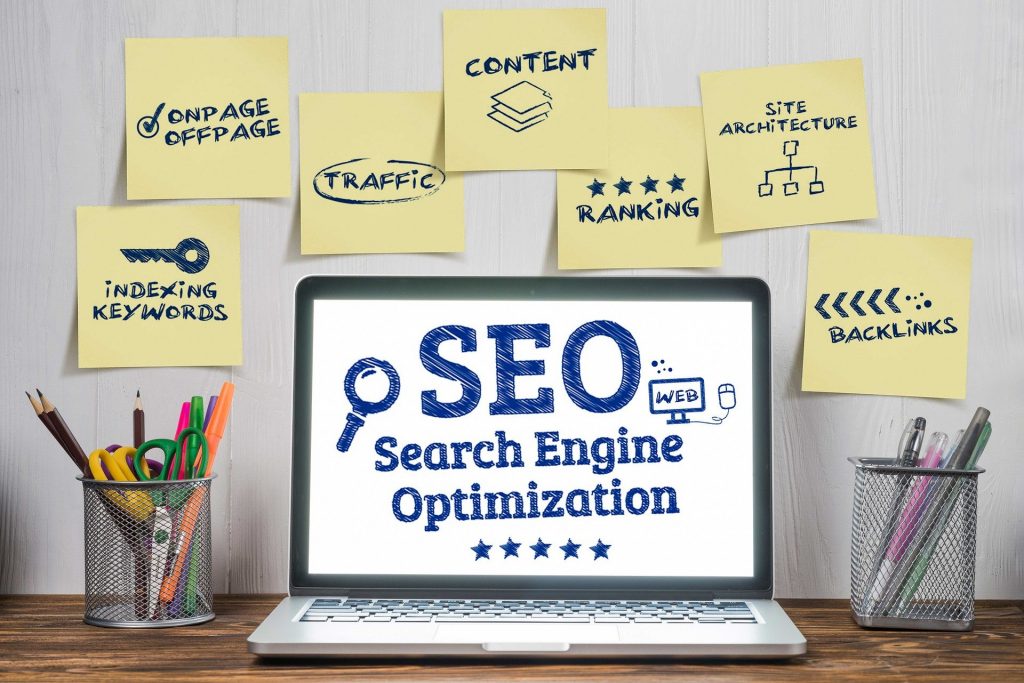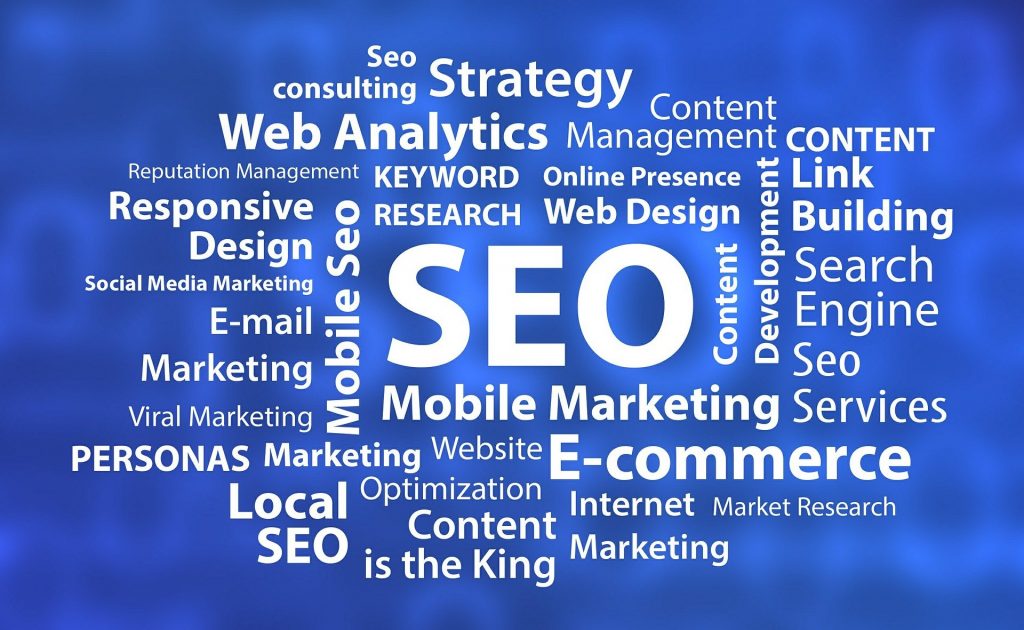SEO, you’ve certainly heard this word. Although it is one of the most common terms in digital marketing, it is also one of the most controversial.
However, knowing what SEO is and how you can use it is essential to ensure your website/blog is indexed on the first page of search engines.
What is SEO?
The purpose of SEO is to help you to optimize your website/blog and so its pages can be shown on the first page of search engines, such as Google.
Search engines are based on an algorithm. The content is classified as more or less relevant, according to this same algorithm, which is based on mathematics and statistics.
That way, the content will always be positioned in the search engines considering its relevance.
This relevance is influenced by the structure and architecture of the website and also by factors that directly influence the ranking of your website and pages.

Why should you use SEO techniques?
When having a website or blog, the ideal is to ensure that it appears in the first position of the search engine. As we told you before, this task is not easy and requires a lot of work and SEO knowledge.
According to Advance Web Ranking, a page indexed in the 1st position of Google achieves a guarantee of 32.12% of organic traffic, in the 2nd position the number drops to 12.38%, in the 3rd to 6.62% and the closer it gets to the end of the first page, the lower your chances of securing free traffic to your website or blog
However, there are two different ways to be present in the top positions of the search engines:
1. Sponsored links: Sponsored links allow you to appear at the top of the first page of search engines, but for a fee. In other words, through campaigns on Google AdWords, you can index your site on the first page.
2.SEO: through SEO, your website can get indexed completely free of charge. All the traffic you will get through this technique will be organic.
So, why do you need SEO? To ensure that you can index your site in the first place of the search engines and thus attract traffic completely free of charge.
By being able to attract more traffic, you will certainly be able to generate more leads and, consequently, more clients. That is, in a totally free way, you can increase the income of your business.
Googlebot
The most used search engine is Google. Therefore, the use of SEO techniques will serve to index your website or blog in the top positions of Google.
Googlebot represents a set of several robots that evaluate the quality of your content, your links, your images. Basically, they analyze everything that can influence the relevance of your content.
But robots will not read your content. They go through the algorithm formulas to understand if your content is hierarchical, the way it is produced and structured so it can be relevant to users.
For that, there are on-page and off-page SEO rules that help your site to be understood as relevant to the Googlebot.
SEO ON-PAGE
SEO on-page, as the name implies, is about optimizing your website and its pages.
Here, the entire structure, hierarchy of your site and the way you produce the content have influence. In this way, the algorithm will establish how relevant your content will be to those who do research related to that topic.

1. Page title
Each page on your site must have its own title. This factor is one of the most relevant because it tells Google what your article is about.
You should use your article’s keyword in the title of the page and place it whenever possible at the beginning of the article.
The title must be identified as H1 and must not be longer than 70 characters.
You should also create catchy titles that clarify the subject that will be addressed in it.
2. Meta description
The meta description is the information that the reader will have about what they will find on your page.
It should be a summary of your article, stimulate the reader’s interest and get them to open it. The ideal is not to exceed 160 characters.
It is important to use your keyword in the meta description, not only to enlighten the reader but also to inform, once again, Google of the topic of your article.
3.URL
Also, your URL should contain the keyword of the article to be optimized for the search engine.
However, it should be as short and objective as possible and have the words separated by a hyphen. Never use symbols, numbers or capitals when defining your page address.
4. Images
There are 4 factors to keep in mind when placing an image on your website: the filename, title, alt text and size.
The name given to your saved image should be used to, once again, reinforce the main content of your article. Use the keyword or synonyms in the name of your images.
The title is important to let the search engine know what subject that image about and if it is within the context of the topic addressed.
Alternative text was designed for blind people, so it must be descriptive enough, ensuring that when it is read by Google’s voice function, it gives the audience the context of the image.
You can use either the title or the alternative text to use your keyword again, as long as it makes sense in the context of the image and for whom the message will be sent.
The size of your images influences the loading speed of your pages. The faster your site, the more likely it is to get well ranked in Google.
Therefore, use compressed images, in JPG format and optimized for the web to ensure the loading speed of your pages.
5.Headings
Headings or header tags are key to tell the algorithm how your content is organized and what the most important sections of your article are.
You should only use a single H1, this being the title. After that you should divide your subtitles into H2, H3 depending on the order of relevance.

Whenever is possible, use the keyword in the title and in, at least, one of the H2 subtitles. It must have multiple H2 and H3, always prioritizing whatever is considered the most important.
6.Keyword
Yes, in fact it is very important to mention your keyword several times throughout the article, but be careful. Using the keyword too much can harm your site.
When Google realizes that a certain word is repeated too many times, it understands as that content is trying to manipulate the algorithm and can penalize your site.
So, you should use your keyword moderately and use synonyms for it, which are also an advantage in the SEO process.
That way, never use the keyword in more than 2% of your article.
7. Content structure
As the algorithm does not read text, it needs to have its content structured in a way that Google understands that it could be relevant to the reader.
So, follow some rules so that your content makes sense:
- Long articles tend to rank better on Google. The minimum is 900 words, but writing articles between 1500 and 5000 words increases the probability of indexing in the first places;
- Divide your content into small blocks of text, using subheadings;
- Highlight content throughout your text. You can do this by putting parts of the text in bold, italics or underlining;
- Use images and/or videos;
- Use internal links and external links;
- Remember that a lot of content is consumed on mobile, so make sure your content can be adapted to this format.
8. Website Speed
Pay attention to your site’s loading speed. The time it takes for a page to open is a relevant factor for Google’s algorithm. Make sure your pages don’t take more than 5 seconds to load.
Tip: use tools on your site that can help you understand the optimization of your content. You can use, for example, Yoast SEO which gives you a great analysis of your content.
SEO OFF-PAGE
SEO off-page refers to all the strategies that take place outside your website and that you cannot directly influence.
SEO off-page can reach up to 50% of your site’s indexing in the search engine. At this stage, Google wants to understand how your site relates to other pages and what kind of interactions it receives from its users.
Therefore, having no direct influence can indirectly help improving your site’s off-page SEO.
1.Link building
Link building is very important for your site’s ranking on Google.
Being able to build a network of links allows you to reinforce the authority of your domain and thus gain points to move up in position.
In this way, it is important both the links that come from other sites and the network of links between your own pages.
Internal links
Internal links are meant to inform Google about the relevance of some pages comparing to others. In other words, the more links you have to a page, the more importance the algorithm will give to that page over others.
You must then establish which pages are most relevant on your site in order to create an internal link sharing network. It is important not to have isolated pages because they will be understood by the algorithm as pages without relevance.

External Links
Links from others to your site can be understood as recognition.
So, if there are other sites pointing to yours, it means for the search engine, that your site has useful and relevant content. The better the other sites are ranked, the better the score will be.
External links also allow you to gain authority on your website’s domain, which is also very important to the SEO process.
Useful content
The best way to get external links to your site is to make sure your content is important to your audience.
As a result, set a content creation strategy that allows you to attract followers. In this way, you ensure that your audience is interested in your content, interacts and shares it.
Guest blogging
You can also make use of guest blogging, inviting renowned figures in your field to write for your blog. Thus, they will be sharing the content that they have created on their website and social pages, which will ensure the creation of external links to your website.
2. Social media
Social signals are more and more important to the Google algorithm. Every interaction that is created on social media and that is directly linked to your website has an influence on your ranking in the search engine.
Mentions of a brand on social media are also understood as external links by the algorithm. Therefore, you should really strengthen your social notoriety to ensure a better indexing of your site in Google.
Share on social media
To get the most out of social media, share your website and blog content on them.
Use different strategies to do this, in order to ensure that you can engage your followers and get them to interact and share your content.
Share button
Make sure that you provide a button on your website and on your blog that allows your content to be easily shared by your followers.
WORK YOUR WEBSITE SEO
You already know that it is essential to work on the SEO on page and off page of your website, to guarantee a good ranking in the search engine.
But you should also know that this is a continuous and time-consuming process. You will not see results overnight.
However, following all the tips we gave you and in the long run, you will see the result of following all the SEO techniques. And you already know, the higher your ranking in the search engines, the easier your site will be found by your potential clients.

